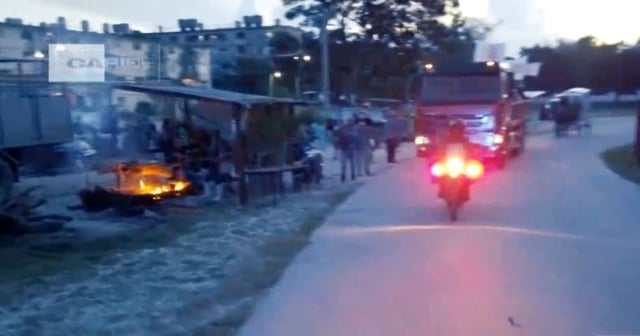The Catholic priest Leandro NaunHung continues to share survival recipes on social media that he considers essential in these times of crisis, despite the criticisms from some people.
NaunHung, when posting on Facebook the recipe for spaghetti with purslane and spinach, shared a reflection: "I am not afraid of criticism, I am only concerned about being forgotten."
Regarding this, he added: “In the 90s, during the ‘special period,’ people survived by eating the ‘unimaginable,’ but they have already forgotten it.”
And about the current economic crisis, he said: "At least those who survive this famine will remember what we had to eat."
In the video shared by NaunHung, a woman can be seen preparing spaghetti that, in addition to purslane and spinach, is seasoned with sweet potato vine and lamb's quarters.
First, he washed the leaves well, then he sautéed them in oil and added seasoning packets. Separately, he cooked the spaghetti until softened, and once ready, he mixed them with the sautéed mixture.
Finally, the priest NaunHung, who enjoys helping in the kitchen and sharing food with parishioners, grated a little cheese on top before handing out the plates to some children and young people.
Through his social media, the priest highlights the invisible reality of the rural communities in Santiago de Cuba, and also shares stories that help people resist the deep economic crisis faced by those with low resources.
Recently, the father shared the story of a mother who uses purslane leaves for cooking as a method of survival.
In another video, he himself taught how to prepare a Creole version of sampa, a long-lasting food that he recommended as a practical solution to the economic and food crisis facing the country.
NaunHung explained on Facebook that sampa (or tsampa) is "a food made from toasted grains and seeds, full of energy for times of crisis."
Finally, during a visit to the rural community of Firmeza, in the mountains of Santiago de Cuba, the NaunHung prepared a recipe with the locals using ingredients that are not well-known on the island but are widely consumed in other cultures, such as nopal and banana flower. They made a big lunch for all the neighbors.
What do you think?
COMMENTFiled under:
